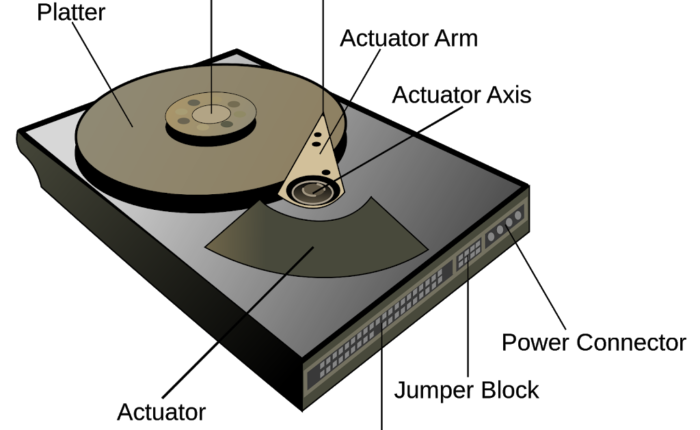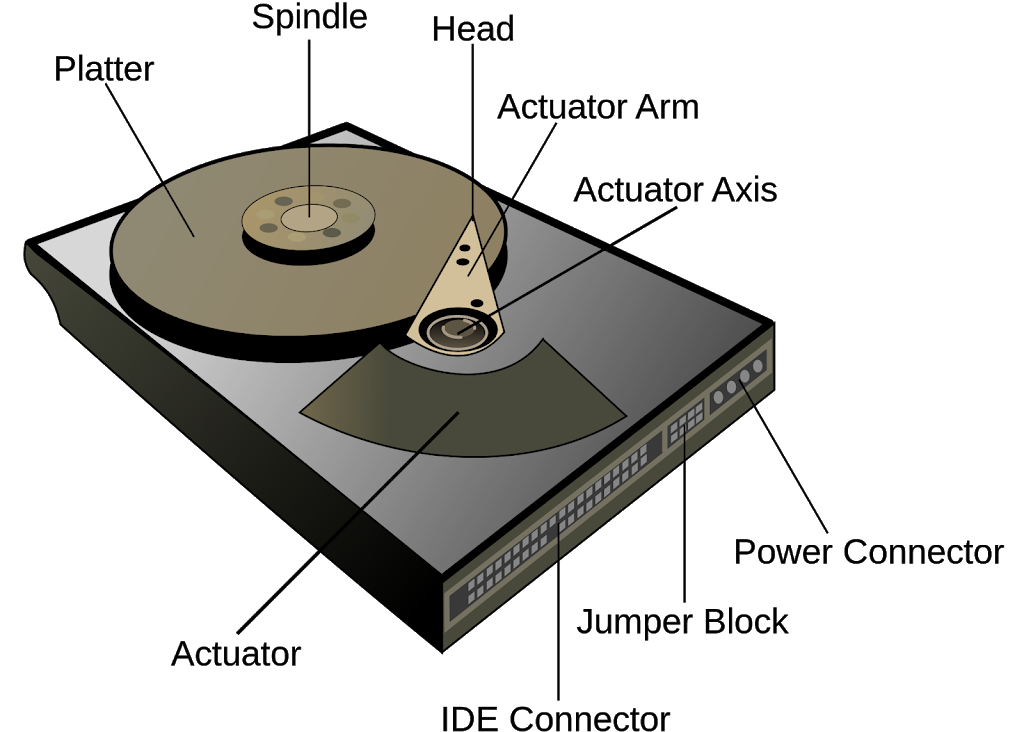Secondary / Auxiliary Storage Devices

The auxiliary storage memory is also known as the secondary or external memory. This memory stores a large amount of data including system program, compiler, translator, assembler and other utilities programs. However, the secondary memory is regarded as non-volatile memory which retains its data even when the computer is turned off. Therefore, it is also called permanent memory.
There are a number of secondary storage devices such as Hard Disk, CD-ROM, Magnetic tape, Magnetic drum and flash memories (USB).
Hard Disk
A Hard Disk Drive (HDD) or simply hard drive is counted in non-volatile memory storage which stores data on magnetized surface layers. A hard disk is often called a fixed disk because once it is installed, it will not have to be removed from the computer. A hard disk has a large capacity for storing data, normally measured in Gigabytes. The hard disk is a stack of a few thin metal plates, usually coated on both sides with a magnetized material. Data is stored as magnetic spots on tracks that form concentric circles on the surface of disks. In a hard disk unit, several disks are mounted as a pack on a vertical central shaft. The disks are slightly separated from one another to provide space for the movement of Read/Write head assemblies between them. The shaft revolves spinning the disks at a very high speed and then data is accessed.

This article has been taken from the book “Basics of Computer, Third Edition” by Muhammad Umar. Want to read about the remaining secondary storage device. Get a copy here and enhance your understand and knowledge. It is a perfect book for both beginner and professionals.
Related Posts
Learn more General Concepts
Basics of Computer By Muhammad Umar
Recent Posts
Ask a Question
Do you have any questions? Rest assured, we're here to provide answers. Join us in our forum where you can engage in fruitful discussions, ask your queries, and receive insightful responses from our esteemed authors and community members. We look forward to your active participation and valuable contributions as we collectively explore various topics. Let's come together and share your thoughts!

